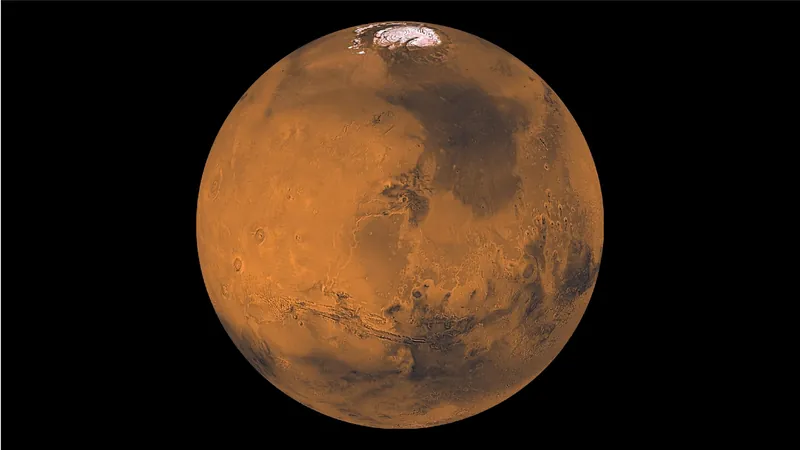
Unraveling the Mystery: Does Mars Have Moons?
2025-06-29
Author: Li
A Historic Discovery Under the Stars
One fateful summer night in 1877, Asaph Hall, an American astronomer stationed in Washington, D.C., turned his telescope skyward, focused on the glowing orb of Mars. As the Red Planet drew nearer to Earth in its orbit, one question consumed Hall: Did Mars harbor any moons?
After nights of searching through thick fog, Hall made an extraordinary find—two moons! He named them Phobos and Deimos, drawing inspiration from Greek mythology where they represented terror and panic, children of Ares and Aphrodite, known to the Romans as Mars and Venus.
Meet the Unusual Twins: Phobos and Deimos
Unlike Earth's moon, which boasts a diameter of 2,159 miles (3,475 km), Phobos and Deimos are mere specks on the cosmic canvas. Phobos measures about 14 miles (22 km) across, while Deimos is even smaller, averaging just 7 miles (12 km). Their irregular, potato-like shapes and dark surfaces, comparable to fresh asphalt, leave them looking more like asteroids than true moons.
The Origins of Mars' Enigmatic Moons
Defined as naturally-formed bodies that orbit a planet, Phobos and Deimos raise intriguing questions about their formation. Many scientists speculate these moons may be captured asteroids, drawn in by Mars' weak gravitational pull. Alternatively, some theorize that they could have formed from debris generated by a colossal impact event on Mars—much like how Earth's moon is believed to have formed.
Nancy Chabot, chief scientist at the Johns Hopkins Applied Physics Laboratory, elucidates, "How the moons of Mars formed is a major open question for science." As researchers examine potential evidence, they find that the moons exhibit chemical characteristics akin to asteroids, yet their capture by Mars would be quite a feat due to the planet's relatively feeble gravitational force.
Upcoming Missions to Illuminate Mysteries
Excitingly, the answer to Mars' moon enigma might be on the horizon. The Japan Aerospace Exploration Agency (JAXA) is set to launch the Martian Moons Exploration (MMX) mission in 2026. This groundbreaking mission will delve into the secrets of Mars' moons and even retrieve a sample from Phobos to return to Earth.
Chabot exclaims, "JAXA's MMX mission is very exciting and is set to be the first to unravel the mysteries of the Martian moons, including answering how they formed." By conducting a detailed analysis of Phobos' composition, researchers can determine whether it originated from an asteroid or from collision-derived debris of Mars itself.
The Implications of New Discoveries
If the MMX findings suggest that Phobos originated from a Martian collision, this could revolutionize our understanding of early Mars—and possibly its potential for extraterrestrial life. Christopher Edwards, professor of astronomy at Northern Arizona University, remarks, "These could in fact be samples of early Mars," indicating that the Red Planet may have once held hospitable conditions for life.
The quest to unveil the truth behind Mars' moons continues, promising to shed light on both the history of our solar system and the ongoing search for life beyond Earth.



 Brasil (PT)
Brasil (PT)
 Canada (EN)
Canada (EN)
 Chile (ES)
Chile (ES)
 Česko (CS)
Česko (CS)
 대한민국 (KO)
대한민국 (KO)
 España (ES)
España (ES)
 France (FR)
France (FR)
 Hong Kong (EN)
Hong Kong (EN)
 Italia (IT)
Italia (IT)
 日本 (JA)
日本 (JA)
 Magyarország (HU)
Magyarország (HU)
 Norge (NO)
Norge (NO)
 Polska (PL)
Polska (PL)
 Schweiz (DE)
Schweiz (DE)
 Singapore (EN)
Singapore (EN)
 Sverige (SV)
Sverige (SV)
 Suomi (FI)
Suomi (FI)
 Türkiye (TR)
Türkiye (TR)
 الإمارات العربية المتحدة (AR)
الإمارات العربية المتحدة (AR)